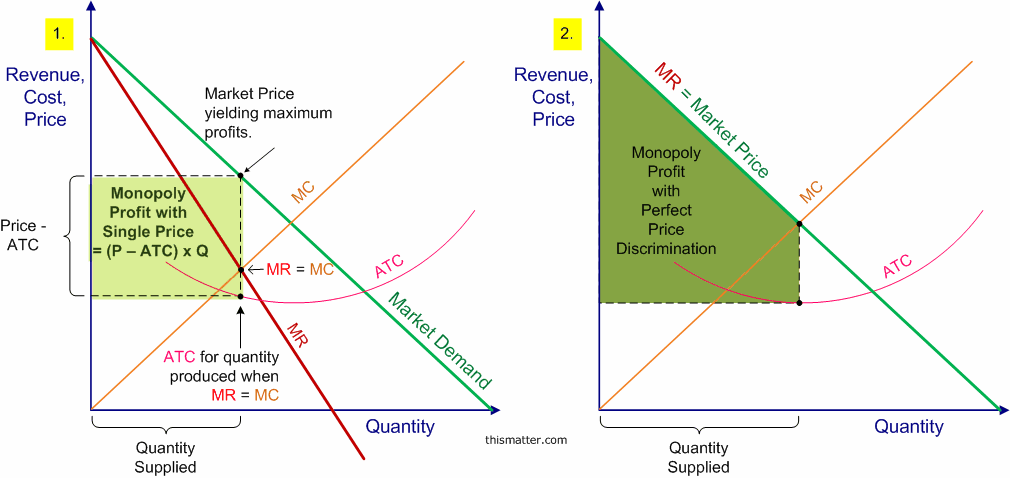We just talked about monopolies and how they cannot price discriminate. Essentially, to sell another unit, monopolies must lower prices—not just of the next sold unit, but the price of all sold units. As a result, marginal revenue is not the price of the next unit, but the price of the next unit minus the price they could have made from the previous units.
Price-Discriminating Monopoly
We do have price-discriminating monopolies! In this case, the demand is equal to the marginal revenue—which means they do not need to reduce the price of previous units as they sell more. They sell different prices to different people.
- The equilibrium quantity will be where , just like all profit-maximizing firms
- The price will NOT be a specific point, as there are multiple different prices (because of discrimination)
- As a result, there is NO consumer surplus. If people are willing to pay more, they will be charged more 🤩
- All area above the ATC at the equilibrium quantity will be profit.
Below is the graph showing the distinction between non-price-discriminating monopolies and price-discriminating monopolies:
